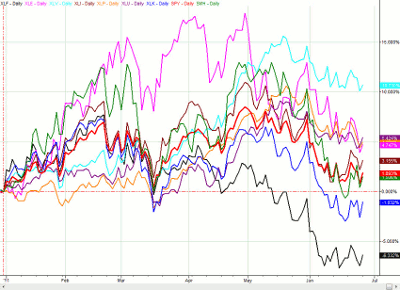Online Trading Academy instructor Merlin Rothfeld discusses some valuable defensive measures that can help investors and traders better protect their portfolios against a stock market decline.
My guest today is Merlin Rothfeld, and Merlin, what strategies are working now?
Well, I would say in the last couple months, it’s certainly becoming much more of a defensive strategy, and I think that anybody who is watching this right now needs to understand that we may be in the beginning of a very big corrective phase in the markets, I would say somewhat similar to what we saw in 2008.
I know it might scare some people, but back in 2008, the average investor didn’t do anything defensive for their portfolio. Matter of fact, they were buying more as the markets dropped, and their 401(k) turned into a 201(k), unfortunately, so hopefully, at this point, people are seeing that past and saying, “What can I do now to protect profits?”
I guess one of the first things we can do is start to rebalance our portfolios. For example, on the way up in 2004, 2005, 2006, 2007, 2008, 2009, on the way up, financials were doing really well. Now, all of a sudden, we’re seeing financials really start to sell off, so if you’re in a financial ETF, maybe what we want to do is sell some of that, lock in some profits, and buy another one that may not have been doing as well.
I think the average investor needs to sit down, lay out all the things that they have in their portfolio, and really look at where they’re heavily weighted and start to rebalance those. Maybe cut back on some positions.
Most people don’t do this; most people, honestly, I don’t even think know one mutual fund that they have in their 401(k) or IRA.
You’re seeing a lot of people just dumping stocks and rushing into government bonds; in fact, I think the yield on the three-year floating with 3% above or below. Is that one of the strategies that was effective in 2008?
Well, I wasn’t really a bond person back in 2008, and I have a little bit different style or approach towards the market; I do not necessarily want to say “Let’s run to bonds for a sense of security.” I would simply rather short the market. To me that’s the better way to do it.
I thought we were making money when the markets dropped, and right now you’re seeing a lot of demand in bond ETFs, and certainly that is a flight to security. They have been doing well recently, but we run into that dilemma of when we start to have hyperinflation or we start to see really strange things happen on a fundamental basis, even a safe play can be dangerous.
NEXT: How to Beat Risk with Sector Rotation
|pagebreak|I personally would much rather be involved in a short on the market if I see it starting to drop, and just recently we’ve broken below a lot of key levels.
Certainly we’ve broken the uptrend that was intact in the market. Now that we’re below, let’s say, the 20- and the 50-period moving averages, that is a clue that we should be short at this point, and I think being defensive, if an investor just simply wants to protect themselves, you can go to cash, or maybe you want to play this to the downside.
For those who aren’t comfortable shorting the market, would you talk about sector rotation out of, say, some of the consumer cyclicals into some consumer staples or something like that?
Absolutely, and I actually have a chart that shows kind of the nine major ETF sectors:
You can clearly see the shift there, and I think that everybody should be looking at that, saying, “Well, right now, maybe I want to be getting more into health care because that’s a strong sector, but financials are getting killed; I’m going to move out of that one.”
We have to always pay attention to that, and when we take the strength of those sectors and tie that through normal business cycles, all of a sudden, what we have is a higher probability of greater returns and minimal risk.
Related Reading:






















